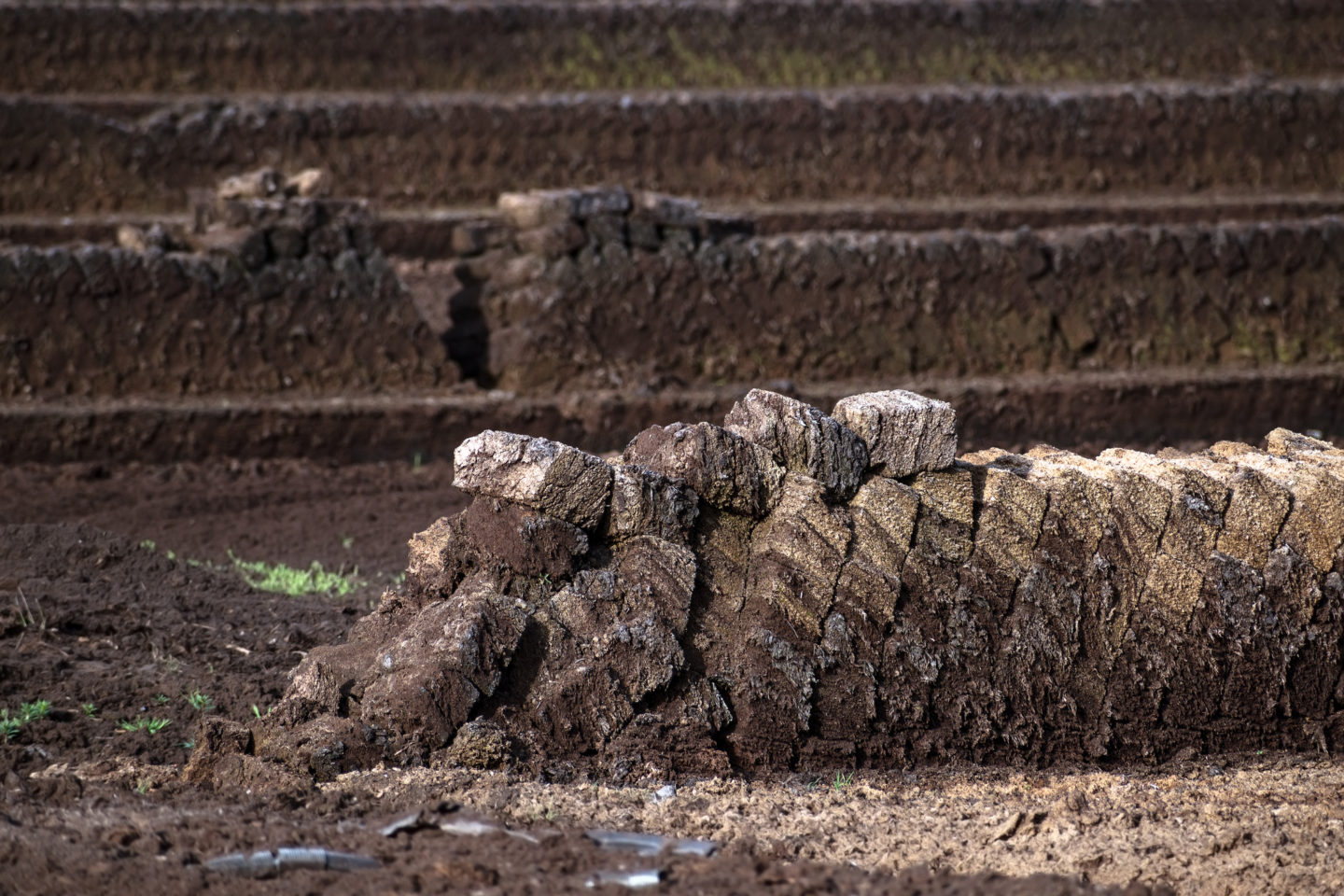A public conservation body which has received millions of pounds to restore Scotland’s peat bogs is allowing commercial peat extraction on its own land, The Ferret can reveal.
Scottish Natural Heritage (SNH), a government agency which “cares for and improves Scotland’s nature and landscapes” has a deal with Diageo allowing the drinks giant to extract an unlimited amount of peat from a site on Islay.
But conservationists have expressed concern over the deal and called on SNH and Diageo to “move on from this agreement as soon as possible” and for all commercial peat extraction in Scotland to end.
Peatlands store large amounts of carbon but when peat is damaged or extracted it is released, contributing to the warming of the planet.
Earlier this year, the Scottish Government announced it would invest £250m in peatland restoration over a ten year period, as part of its plans to reduce emissions which contribute to climate change.
SNH itself has stated that, as a carbon store, peatlands have “a major role to play in combating the effects of climate change.” It coordinates restoration work on Scotland’s peatlands through the Peatland Action programme, which has received £20m of Scottish Government funding.
However, The Ferret has established that SNH has a deal with Diageo which allows the firm to extract an unlimited amount of peat from Castlehill on Islay, for use by the whisky industry.
In response to our questions, SNH admitted that the deal has no end date, and extraction will continue “until the peat is exhausted.”
The government agency also stated it does not know how much peat has been extracted from the site, either in total, or on an annual basis. It has made no assessment of the impact of these extraction operations on either the local environment or regarding Scotland’s climate change emissions.
The SNH deal to allow peat extraction at Castlehill was made in 1989, but because the right it gives to Diageo is one of “heritable and irredeemable servitude” it has remained in place ever since. It has no end date.
SNH says that “the extraction of the peat is strictly for the purposes of the Diageo-owned Port Ellen Maltings only, which supplies local whisky distilleries with malted barley dried using Castlehill peat.”
The Port Ellen Maltings is owned by Diageo but also has a long-standing agreement with other distillers on Islay to supply them with peated malt, according to a spokesperson for the company.
Diageo’s spokesperson also said the whisky industry only accounts for less than one per cent of peat extracted in Scotland, compared to a figure of over 90 per cent for the horticultural sector.
Alistair Whyte, head of conservation charity Plantlife Scotland said: “Plantlife Scotland is calling for an end to all commercial peat extraction in Scotland. Whilst most peat extracted in Scotland is used in horticulture, all peat extraction has an impact, and we welcome any efforts from the whisky industry to move quickly to sustainable alternatives.
“Given the importance of peat as a wildlife habitat and as a natural carbon store, we’d expect to see SNH working with Diageo to move on from this agreement as soon as possible.”
A spokesperson for SNH said: “This site was bought by SNH in the 1980s with the specific aim of protecting sensitive sites on Islay at a time when they were threatened by peat extraction plans.
“The agreement protected large areas, including the blanket bog habitat of Duich Moss/Eilean na Muice Duibhe SSSI/SPA/SAC, while allowing for the continuation of an important local and national industry.
“The majority of peat that is extracted in Scotland is used in horticulture, with the Scotch whisky industry accounting for less than 1 per cent.”
A Diageo spokesperson said: “The Scotch Whisky industry has a long history and tradition of using peated malt in single malt whisky. It delivers a critical flavour component to both single malt Scotch whiskies and also blended Scotch whiskies which is one of the key points of difference between Scotch whisky and other world whiskies.
“Our business uses relatively small amounts of peat to produce peated malt barley for our distilleries and others in the whisky industry. We fully recognise the important role peat bog ecosystems play in terms of biodiversity and climate change and we are committed to working with partners to ensure we manage resources as sustainably as possible for the future.”
SNH’s website explains that “Scottish peatlands store 1.7 billion tonnes of carbon,” which is “equivalent to 140 years’ worth of Scotland’s total annual greenhouse gas emissions.”
The agency says it is “working with land managers and partners to restore this vital carbon sink… returning peat bogs into thriving wetlands.” Under its ‘Peatland ACTION’ initiative, it says that over 19,000 hectares of peatlands have been “put on the road to recovery with funding provided by the Scottish Government. The long-term ambition is to restore 250,000 hectares of peatland by 2030.”
However, SNH notes that when peat is extracted and burned, it “has the potential to release hundreds of years of stored carbon back into the atmosphere.”
Photo thanks to iStock/fermate.















I seem to remember a similar situation with mineral rights a few years ago where many existing quarries were operating on the principle of “aye been”. But it was then possible to regularise the position and bring pretty well all mineral extraction under planning control, effective or otherwise. Given the climate crisis, that’s surely the very least that Scottish Government should be doing, so we can have a sensible debate about the future of peat management in all its aspects?